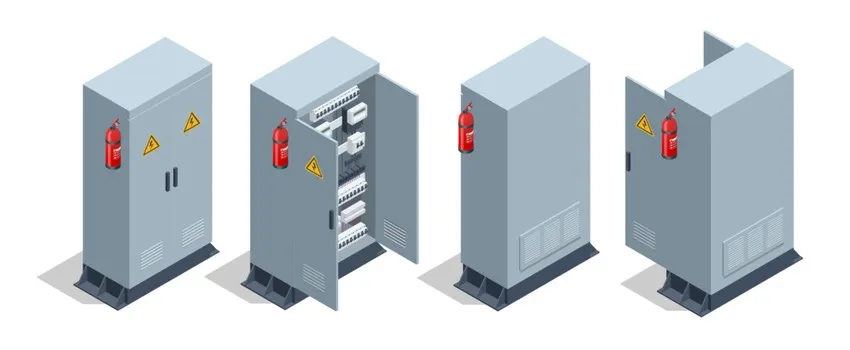Why an Energy Cabinet is a Smart Solution for Modern Homes

If you are designing a home energy system or retrofitting your house for renewables, you might ask yourself: What does an energy cabinet do, and is it something worth investing in for my home?
Whether it’s an outdoor energy cabinet housing your batteries or an outdoor telecom cabinet-like enclosure for modular energy storage, an energy cabinet offers more than just a box. It’s the heart of a home-scale energy storage solution that combines battery modules, control systems, inverter interfaces, and safety enclosures all in one package.
Let’s walk through what an energy cabinet is, how it benefits a modern home, how to choose one, and finally real-world examples and key questions to ask before buying.
What is an Energy Cabinet?
Here’s a definition box/comparison to clarify terms:
Term | Meaning |
Energy cabinet | A prefabricated indoor or outdoor enclosure containing battery storage modules, inverters/PCS, monitoring/control system, and any ancillary devices used to store electrical energy and/or manage it. |
Outdoor energy cabinet | A version of the energy cabinet designed to be sited outdoors: weatherproof, with cooling/ ventilation, robust enclosure air-tightness often IP-rated. |
Outdoor telecom cabinet | It was originally designed for telecom infrastructure in harsh environmental conditions; nowadays, it has been increasingly adapted for home/industrial energy storage with similar characteristics of rugged features. |
Understanding these variants informs you whether you require a simple indoor unit or a rugged outdoor cabinet that can handle heat, weather, and remote placement.
Why Energy Cabinets make sense for homes
Here are key benefits-each especially relevant today, as solar, storage, and smart homes converge:
- Backup power and resilience:An energy cabinet with integrated battery storage lets you ride through grid outages, shots of instability, or load shifts.
- Better self-consumption of solar: Since rooftop solar is feeding into a system with storage in an energy cabinet, you store excess energy during the day and use it at night, reducing grid purchases.
- Compact, clean installation:rather than a jumble of batteries, wires, controllers scattered around, the cabinet gives a tidy integrated package—especially useful outdoors or on the side of the house.
- Future-proof:The cabinet offers modular pathways as one upgrades appliances, adds EV charging, or integrates micro-grid functions.
- Safety & durability:Good energy cabinets feature temperature control, fire protection, moisture/dust protection, and are built for years of use.
Consideration: If my system only powers lights and basic loads, do I need a full energy cabinet or can I stick to simple battery racks? In many cases, this comes down to future flexibility, safety, and location. If outdoors or subject to weather, a cabinet often wins.
What to Look for When Selecting an Energy Cabinet
Site & Enclosure Requirements
Outdoor enclosure? It will require weather-proofing – usually an IP or NEMA rating, cooling/ventilation and secure mountings.
What ambient conditions? High humidity, dust, heat-these favour outdoor energy cabinet models with thermal control.
Space & access: Provide adequate clearance for service, ventilation, maintenance; foundation or pad may be required.
System Components & Capacity
Battery type: lithium iron phosphate, other; inverter/PCS interface, EMS-energy management system.
How much capacity do you need? A unit sized for overnight backup versus full self-consumption will differ, for example.
Modular expansion: The capability to add more battery modules is available with this cabinet in the future. This will be important for future-proofing.
Integration & Smart Control
Monitoring & control capability : can you see battery state-of-charge, system health, remote alerts?
Compatibility with your solar system, home controller, EV charger, etc.
Safety features: Fire suppression, thermal management, access control, appropriate certifications.
Cost vs. Value
Up-front cost will be higher than a simple battery rack, but the value comes via integration, lifespan, compact form, and safety.
The extra cost often pays off with less wiring, fewer installation surprises, and lower maintenance.
Real-world example: In one outdoor cabinet series, design features such as liquid cooling + explosion vents + dehumidifier helped ensure safe outdoor deployment even in harsh climates.
Real Home/Residential Use Cases
Case 2023–24, Suburban Home, Australia: The owner installed an outdoor energy cabinet featuring 10 kWh battery storage plus rooftop solar. After a summer power cut, the system ran critical loads (fridge, lights, internet) for 16 hours without interruption.
Case 2024, Coastal Home, California: A homeowner facing fire-risk and grid shut-offs turned to a rugged, outdoor “telecom style” cabinet energy storage unit. Its enclosure included fire-rated vents, moisture control, and remote monitoring. Since installation, the system has handled multiple planned outages without incident.
These examples show: while the main concept is home-scale, the cabinet builds resilience and peace-of-mind.
Common Questions You Might Have
Q: Will a battery rack inside my garage suffice instead of an energy cabinet?
Yes, but just provided your garage is well ventilated and temperature-stable, and you don’t mind higher maintenance with less weather protection. If the rack is outdoors or exposed, the cabinet is smarter.
Q: Will adding an outdoor energy cabinet raise my home insurance cost?
It depends on your region and insurer. But because the cabinet is built to safety standards—fire, temperature control, locking—many insurers view them favourably; check with your provider.
Q: If I don’t have solar panels yet, then is it worth buying an energy cabinet?
Yes, if you plan to add solar later. Buying a modular energy cabinet now means you’ll be ready for the integration of solar, especially if you do the routing of wiring and spacing early. Future-proofing matters.
My Insight — What I have Learnt Working With These Systems
From working on dozens of home energy storage installations, I often notice delays or cost overruns that are caused by poor planning around the cabinet: site preparation, cooling and ventilation, wiring access, expansion space.
Here’s what I tell clients:
- Plan the location: pick a place for the cabinet, ensure access and lay a foundation.
- Decide on capacity with head-room: If you might add EV charging or heat-pump later, size the cabinet appropriately.
- Prefer a pre-integrated cabinet to piecemeal assembly-the cost is higher, but it will greatly reduce many hidden headaches.
- Maintenance of the cabinet: Though “plug-and-play,” you’ll still need to keep ventilation clear, check door seals, review monitoring logs, and keep firmware updated.
If you’re ready to evaluate energy cabinet options, we offer comparison sheets that cover indoor vs. outdoor models, capacity tiers, integration with solar, and cost modeling, which you can review next.
